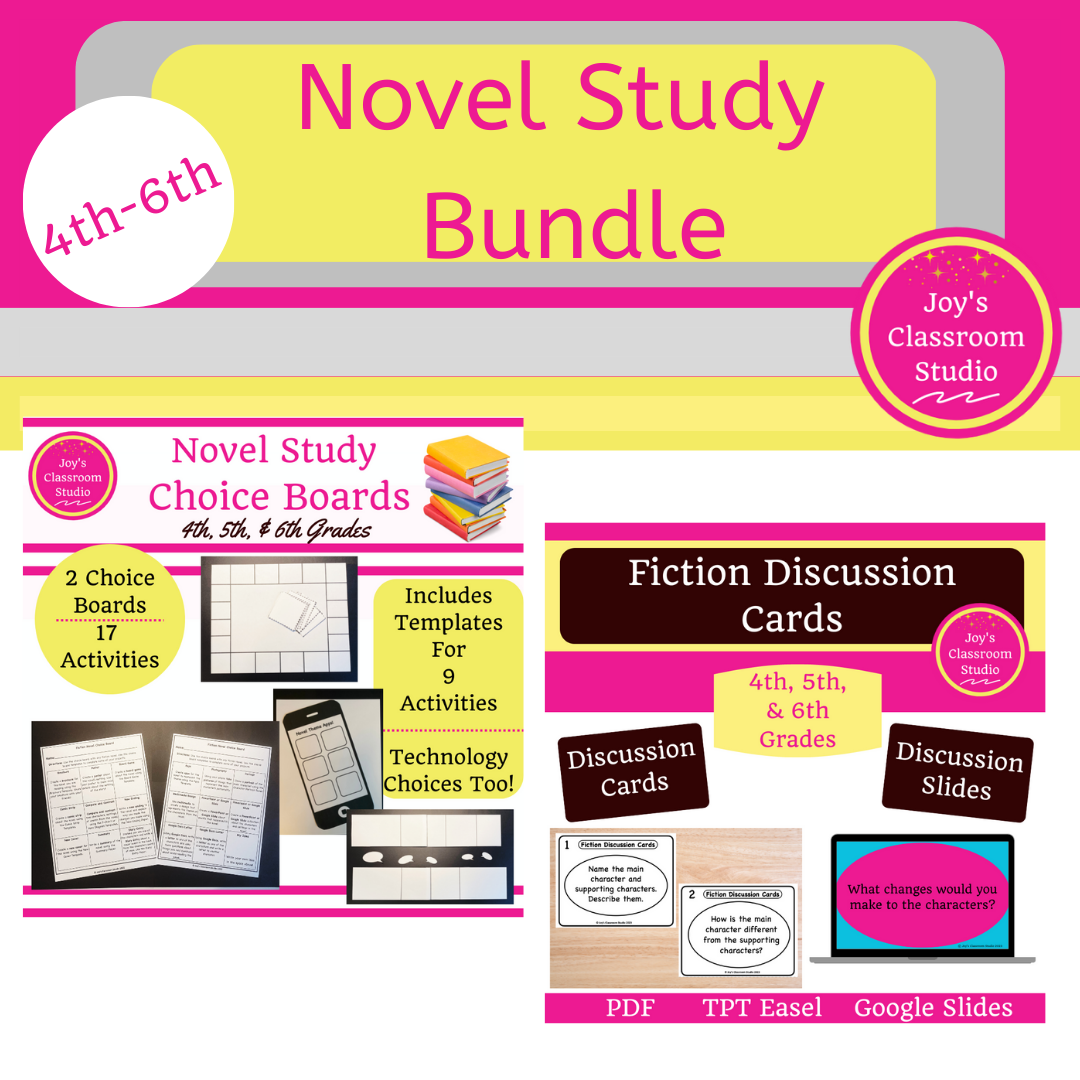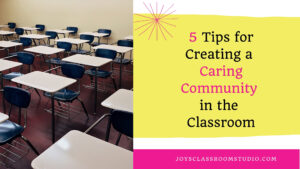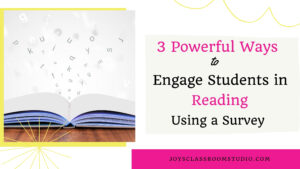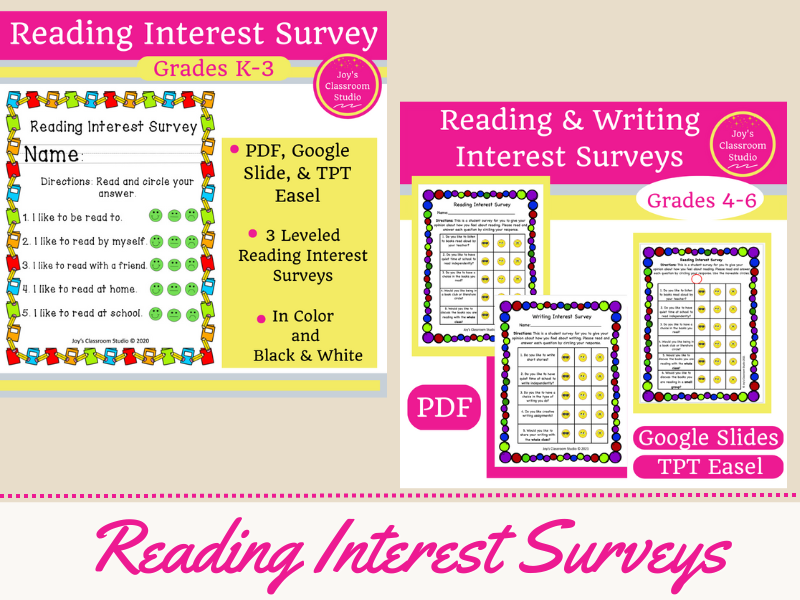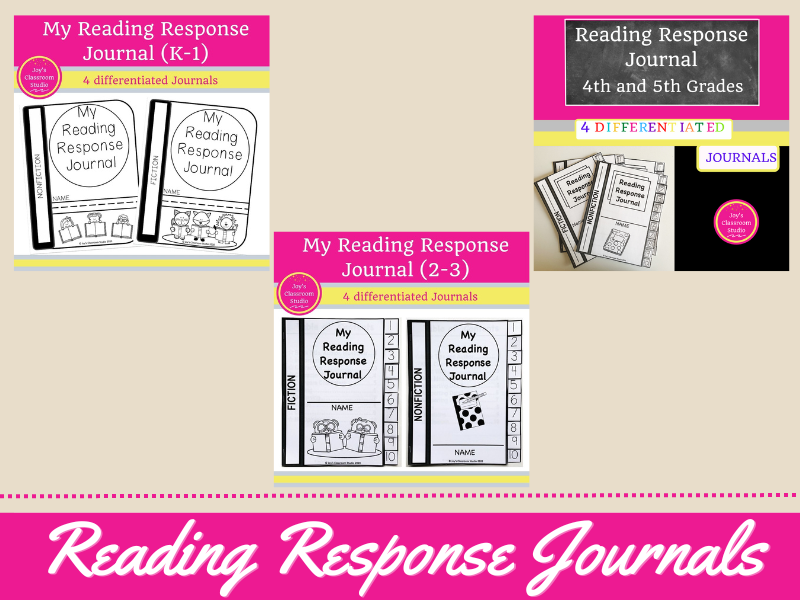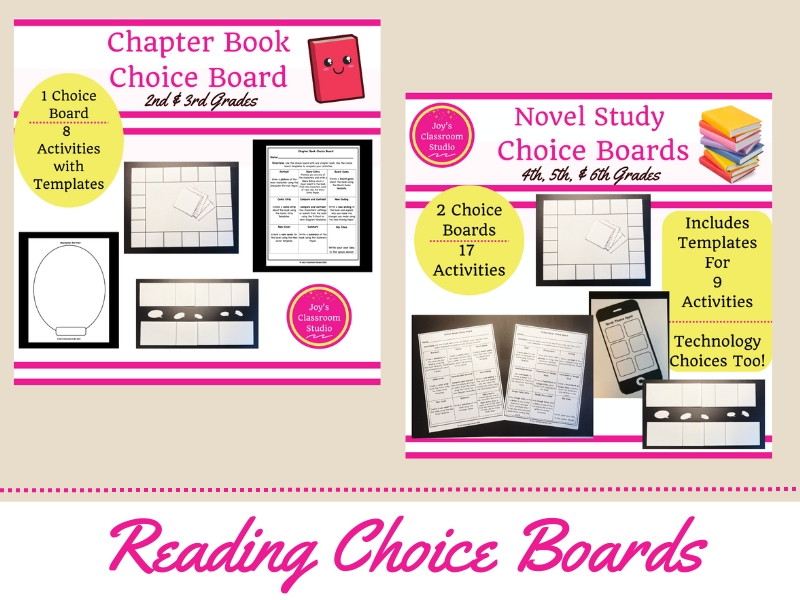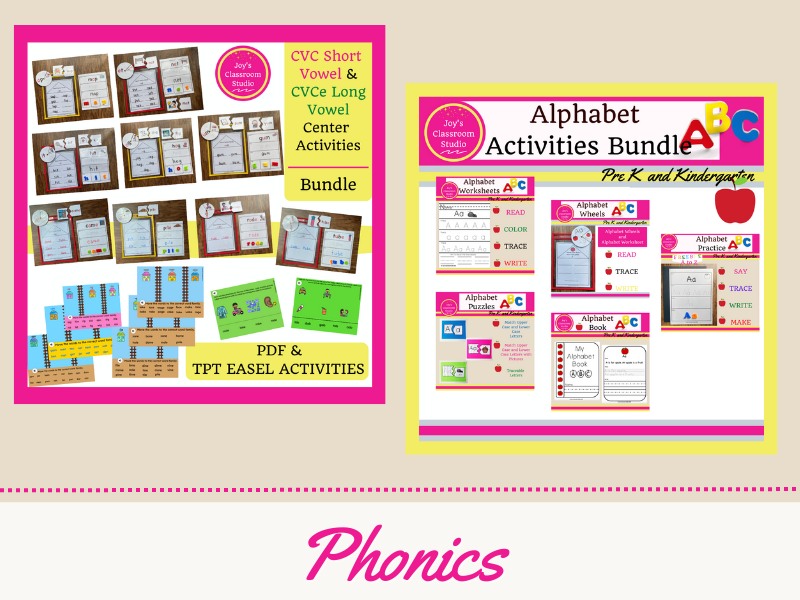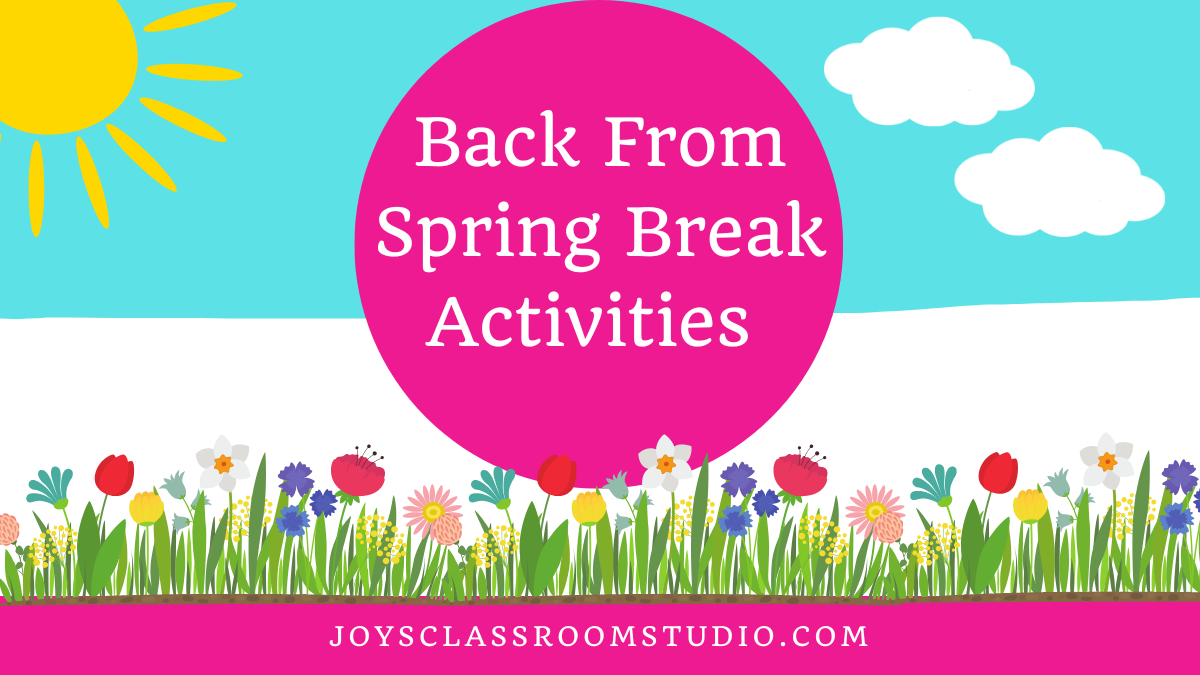
Introduction
Spring break is a much-awaited event in the classroom, especially if the break falls after March! So much so that it appears that my students are not concerned about when we are coming back from spring break. I have not heard many students ask when do we come back from spring break. They seem to be very much excited about enjoying much-needed time away from school!
I know in my school district our spring break always begins around the Easter Holiday. Frequently our spring breaks are in April, like this year. This makes March a very very long month for teachers (and students) who are eagerly awaiting the arrival of spring break!
But for anyone who can identify with me, we need to remember, spring break will be here before we know it! So in the meantime, we can try to make the most of our time in the classroom and enjoy the journey. As teachers we can start to plan returning from spring break activities, to make the end of the year pleasant and enjoyable instead of chaotic and tumultuous!

Review Rules, Procedures, and Routines
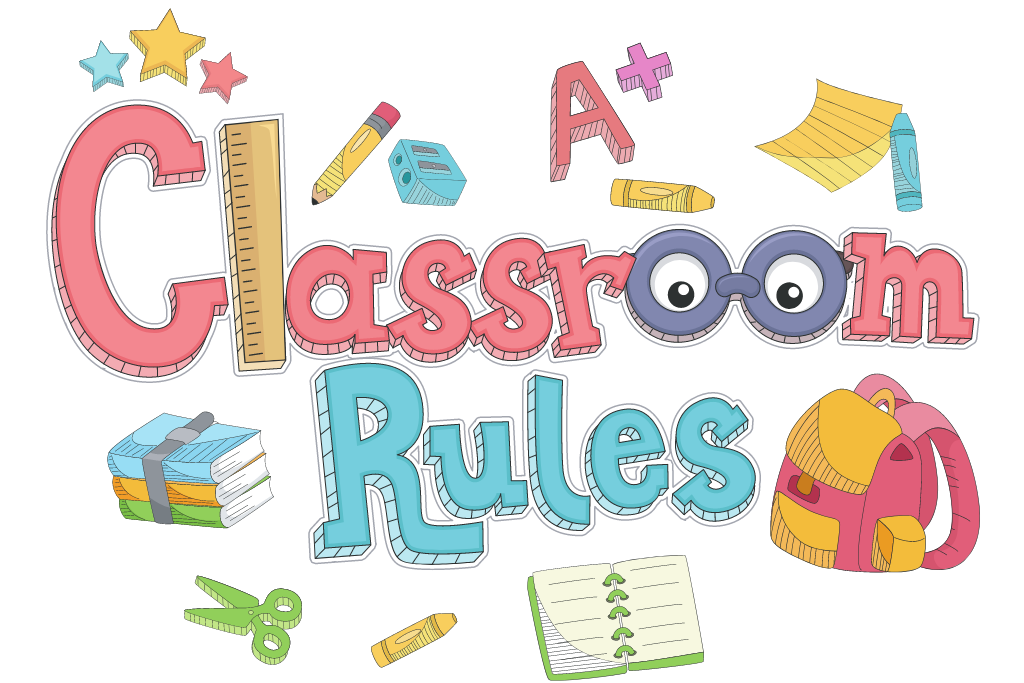
First day back from spring break activities need to be planned for the first day when students return. Mainly because we know and our students know that the end of the school year is quickly approaching. However, it is not the end of the school year, yet!!!
If you want to avoid chaos in your classroom you need to let your students know your expectations. Students need reminders that rules, procedures, and routines are still in effect in your classroom. After a long and well-deserved spring break, it’s important to establish clear rules, procedures, and routines to ensure a smooth transition back into the classroom and help set the tone for the remainder of the school year.
Here are quick reminders of what you may want to do:
- Start the day with a morning meeting to create a positive and welcoming classroom environment. Or if you teach in a middle school environment, start off each class period with a brief 5-minute reminder of expectations in your class.
- Review and reinforce classroom expectations, such as respecting others, participating in class, and being responsible. Review and reinforce school-wide rules and expectations.
- Review classroom procedures, such as entering and exiting the classroom, voice level expectations for during class, and what to do if they need to leave their seat or the classroom.
- Discuss any changes in the routine for class or school each day.
- Use positive reinforcement strategies, such as praise, rewards, countdowns, and incentives, to motivate and help students stay engaged.
- Help students set academic goals for the remainder of the school year, and encourage them to strive for excellence, let them know that their grades still matter!
- Finally, be sure to have fun going into the end of the school year with your students! I always do an end-of-the-year countdown with my students. I hang up the number of days we have left of school and we take down a number each day. It gives students a visual of how many days are left!

Engaging Activities
After spring break, engaging activities are a must! We, teachers, need them just as much as our students do to help make it through to the end of the school year.
Engaging activities in the classroom can help those last few weeks fly by while still getting our students to engage in learning! During this time our students are more eager to work in groups or with a partner since they know their classmates better. With engaging activities, students can stay focused, motivated, and enjoy learning.
Here are some examples of engaging activities:
Class Raffle
- Class Raffle: Currently I do an end-of-class period raffle for my 6th graders. I don’t do this every day but I get a feel for how the class is going at the beginning of class. If I feel students need extra motivation I begin the raffle! I talk about class expectations plus what is needed to earn a raffle ticket. At the end of class, I pass out raffle tickets and have a raffle where students can win a prize. I draw two names per class period. You could also do a weekly raffle with students earning a raffle ticket per day and then have a chance to win a prize at the end of the week.
Poetry Unit
- Poetry Unit: Many students enjoy poetry, April is a great time to do a poetry unit since April is National Poetry Month! Here are some things to include when doing a poetry unit (1) Start with a brief overview of what is poetry and talk about its different forms, such as sonnets, haikus, free verse, and slam poetry. (2) Provide examples of famous poems and poets. (3) Encourage students to write their own poems. Remind them not to copy someone else’s work off of the internet. And (4) have a poetry reading or slam event where students can showcase their work. Do this during the day. When I taught elementary school, we would often have our upper elementary students showcase their work to the primary students.
Novel Study
- Novel Study Units: Students can read novel studies with one another, use discussion cards to help them discuss the novel, and then do novel study choice board activities. For 4th quarter, after spring break, students read two novels written by the same author. Ideally, these books are sequels. Students are encouraged to read in pairs or groups with students who are reading the same book. This is very informal! Students are encouraged to read for enjoyment! I give students book choices but I also allow them to pick their own books to read too! Read my blog post “Why Use Novel Studies” to learn more about how I do novel studies in my classroom. If you are interested in my fiction discussion cards and novel study choice board activities here is a link for that bundle in my TPT store.
Class Outside
- Class Outside: If the weather is nice, take your class outside to read or complete a lesson. While outside remember to give students 5 to 10 minutes of free time to play. I always enjoy having bubbles, sidewalk chalk, and bubble gum for students to use while outside.
Field Trips
The end of the school year is a great time to go on field trips! Reinforce what was taught earlier in the year by taking a relevant field trip. For many the time after spring break, is when state tests are over and space for more creative activities is available.
Some of my favorite places to take students on a field trip to are skating, bowling, the zoo (be prepared for all types of weather), science centers, the theater (for a morning show specially made for field trips), or a local state park.
One year we took our students to one of our local state parks. We planned stations and rotated students throughout our game and activities stations. Since we were in the park we were able to take students on walks and have them play on the play equipment. Be creative when you think about what field trips to take your students on. Remember many field trips can be tied to your state standards if you need to justify going on your trips.

Conclusion
It is important to have back-from-spring break activities in place when returning from break. Teachers as well as students know that the end of the school year is quickly approaching. So it is necessary for you to set the tone of how the rest of the school year will go.
Students need to be advised that rules, procedures, and routines still matter. It is equally important to plan for engaging activities and field trips to not only continue to keep students learning but to help you and your students enjoy it too!

